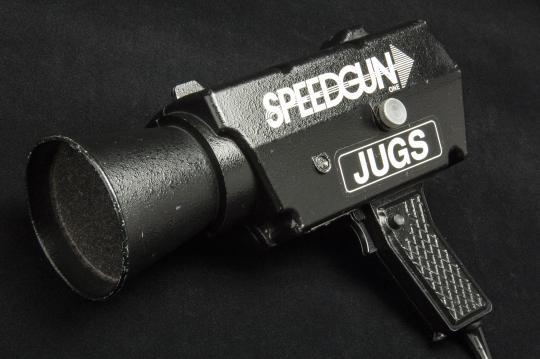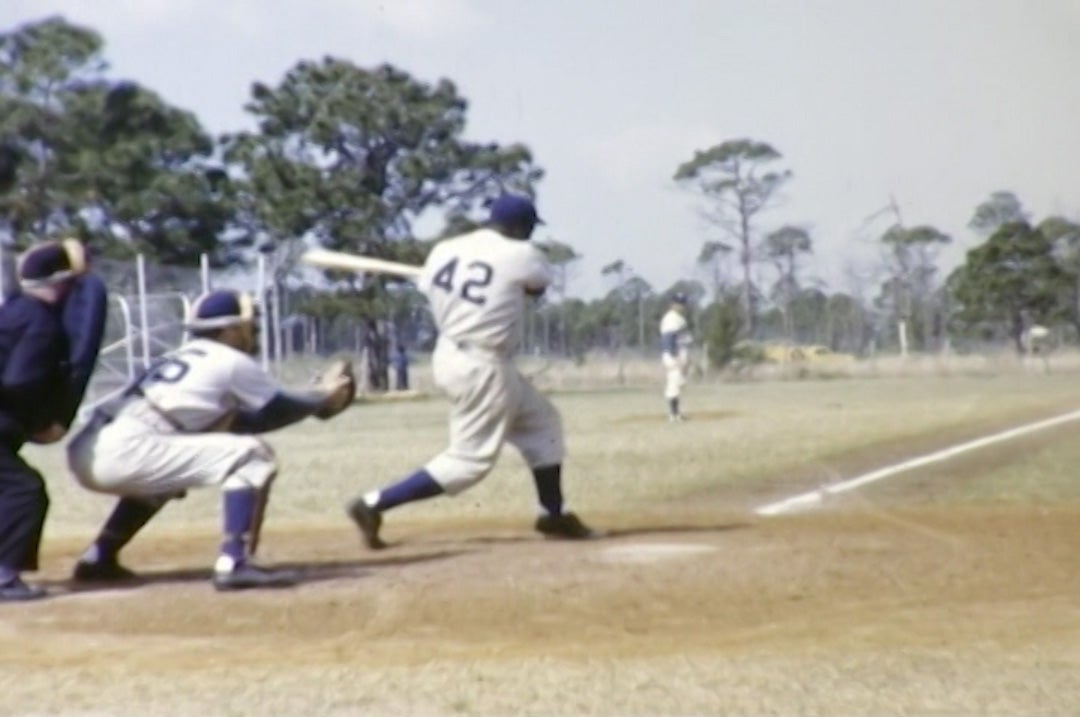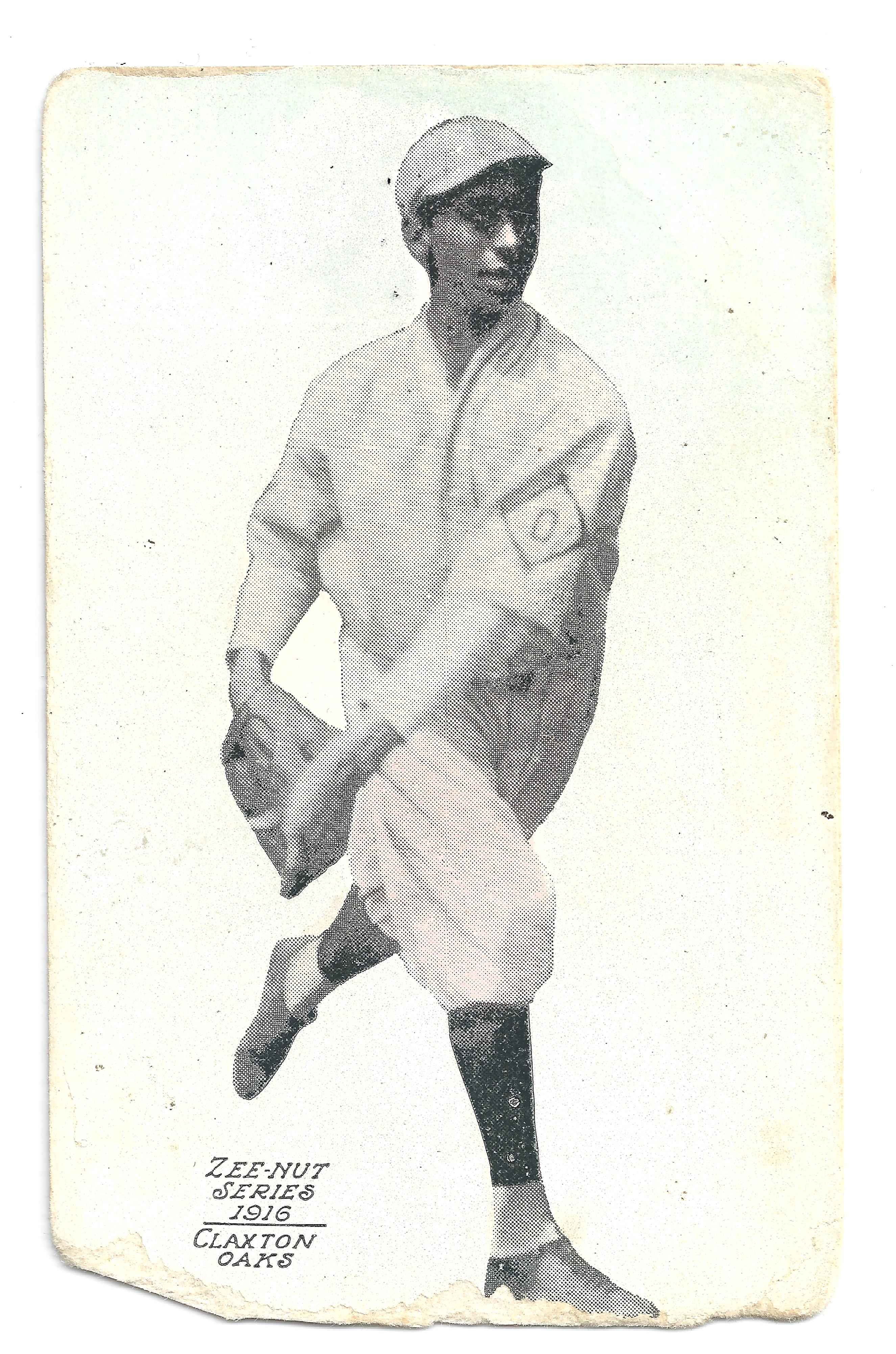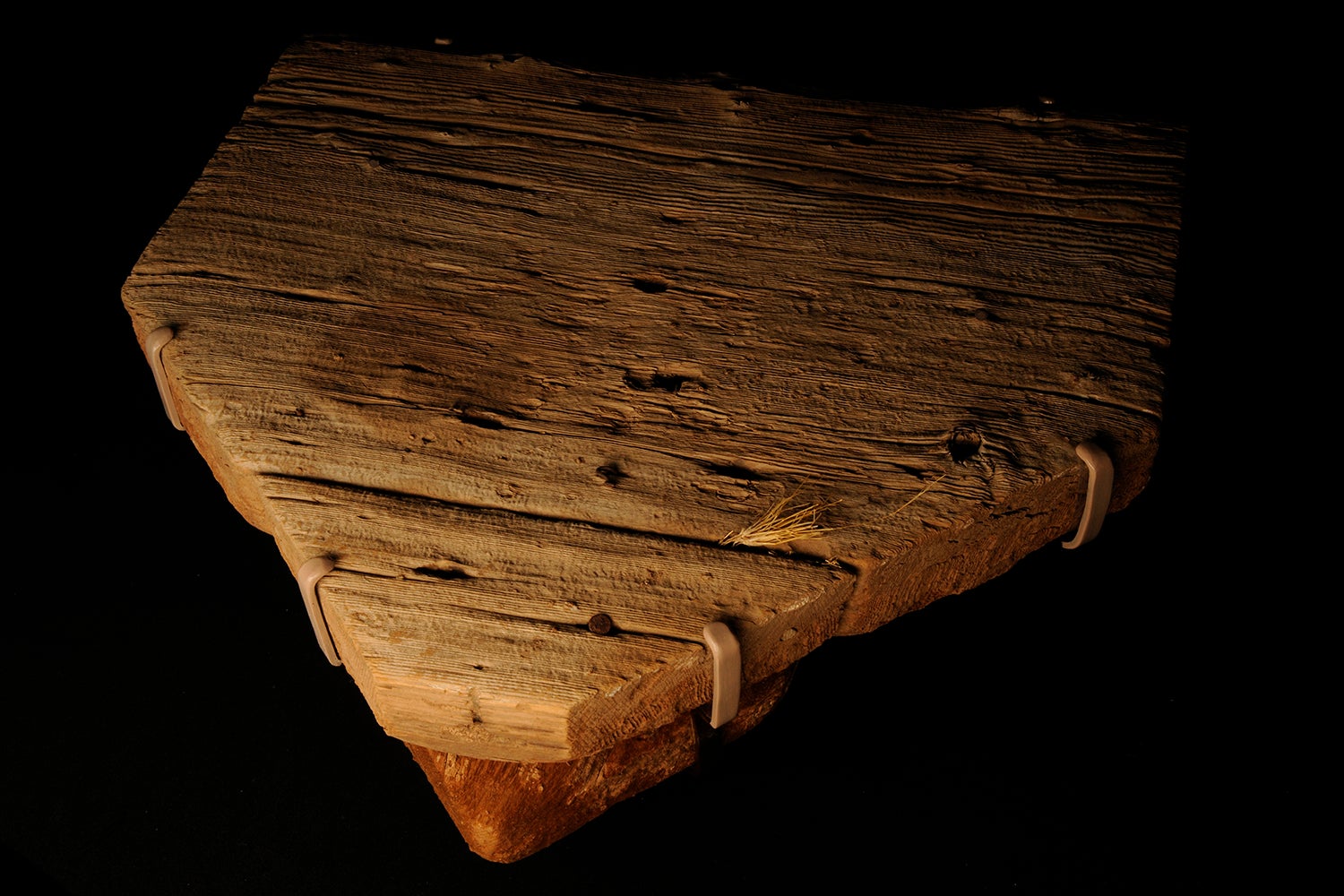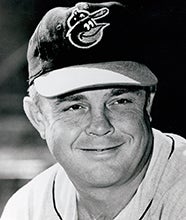- Home
- Our Stories
- Museum preserves artifacts designed to test the limits of performance
Museum preserves artifacts designed to test the limits of performance
Technology that measures speed on the diamond has been a powerful tool in the sport’s evolution as the role of analytics has boomed in recent years.
The National Baseball Hall of Fame and Museum has in its collection of artifacts hundreds of bats, balls and gloves, to name a few of its most typical objects, but also among its three-dimensional items are a JUGS Speed Gun, a “smart bat” and a Radar Ball that all take the guess work out of calculating speed.
Five decades ago, when the handheld radar gun was first introduced to the National Pastime, some scoffed at this new high-tech gadget but it has since became ubiquitous at ballparks across the country.
While radar guns are a relatively recent innovation to the sport, historians can track baseball’s fascination with measuring the speed of pitches to the 19th century. By 1912, pitchers Walter Johnson and Nap Rucker were famously tested at the Remington Arm Plant in Bridgeport, Conn. And after Cleveland’s Bob Feller burst on the scene in the late 1930s, a number of inventive methods were used to measure his fastball.
Official Hall of Fame Merchandise
Hall of Fame Members receive 10% off and FREE standard shipping on all Hall of Fame online store purchases.
The radar gun explosion in baseball came in the mid-1970s and at the forefront was former big league outfielder Danny Litwhiler, the man largely responsible for baseball’s radar revolution.
The idea came in the fall of 1974 after the then-Michigan State head baseball coach saw a campus newspaper story highlighting a police officer armed with a radar gun to thwart would-be speeders. Police officers began using radar guns in the 1960s to track automobile speeds. Soon enough, Litwhiler had the featured police officer and his cruiser on the ballfield tracking his pitchers.
“Since it worked on speeding cars, I thought it might be adaptable to baseball,” Litwhiler said years later. “Because the radar gun only worked when plugged into the cruiser's cigarette lighter, the police obliged by coming with a radar with a radar-equipped car to a workout.
“They timed one of my pitchers throwing from 75 to 80 miles per hour on level ground. That seemed about right and I was more convinced when they clocked the same pitcher throwing about five miles faster off a mound. That’s what you should pick up and I felt maybe we got something here.”
Litwhiler would approach John Paulson of Jo Paul Industries – the man behind the JUGS Curveball Pitching Machine - and eventually they had a battery powered prototype that would become the JUGS Speed Gun.
“In October 1974, I wrote to Baseball Commissioner Bowie Kuhn to tell him what I had discovered,” Litwhiler would say. “I wanted every team to have the same advantage or opportunity to work with the radar gun at the same time.”
Litwhiler’s letter to Kuhn, dated Oct. 28, 1974, read, in part: “I know you and all people in baseball are continually seeking ways to help the game. In fact, I have practically dedicated my life to that end, always making an effort to keep baseball the most popular and interesting game played. The most enjoyment I get out of baseball today is to find or create new teaching aids.
“The purpose of this letter is to reveal a discovery I recently made that every organization should know about if they have not made the same discovery. I originally thought I should notify the club presidents but decided it might be best through your office. My writing directly to each organization might be viewed as some crackpot idea. If you believe this to be true, please discard the letter.”
Litwhiler is credited with more than 100 inventions for baseball, including “Diamond Grit” to dry wet spots on the infield as well as an unbreakable mirror that allows a pitcher to observe his own motion as he throws.
In 1990, Litwhiler donated to the Baseball Hall of Fame the shoebox-sized prototype JUGS Speed Gun used in 1975 Spring Training by Baltimore Orioles manager Earl Weaver. The Hall of Fame has in its collection a number of radar guns, including those used by scouts Ralph Avila and Joe Branzell.
“I remember seeing Earl going around the field checking everything that moved,” Litwhiler said. “This actually opened up the door for all baseball to adopt the radar gun as part of baseball development.”
Weaver would later recall that initial meeting with Litwhiler: “’What good is this?’ was my first reaction and then he convinced me it had merit.
“I’d save that much in bonus money [the speed gun’s cost of $1,200] by not signing some guy who couldn’t throw. This thing measures throwing speed factually, without trusting to guesswork.”
But there were a number of early skeptics.
“That gun doesn’t tell you if the ball has movement or not,” said Kansas City Royals manager Whitey Herzog. “You got guys throwing 85 miles an hour who are more effective than guys throwing 90 miles an hour.
“Nor do I trust its accuracy. I can remember when they put [radar] readings on the scoreboard after each inning in Texas. Dennis Leonard was throwing the hell out of the ball for me and they had Ferguson Jenkins throwing five miles faster. They had Leonard believing he was losing his velocity. I don’t like that.”
Legendary scout Hugh Alexander also needed convincing, saying: “I was against those things the first time I ever heard of the sons of guns. I've said this from the beginning, and I still stand by it: If you give a scout a gun, he'll become dependent on it.
“What did all the guys do all those years without the gun? We did it with the naked eye, and we didn't make too many mistakes. You can tell what a pitcher's got if you can just see. The hitter will tell you what he's got.”
Soon after its introduction, though, many in the game saw its benefits.
“One thing it can show you,” said Dodgers GM Al Campanis in 1975, “is that a pitcher is losing a little velocity off his fastball, perhaps a batter or two sooner than the catcher might pick it up.
“Then it could help decide on a pitching change a little sooner, perhaps just the one batter sooner that could mean the ball game.”
According to Mets pitcher Jerry Koosman in a 1975 interview: “It’s good for teaching. It really proves to you that the important thing between a fastball and a changeup is the speed difference – about 12-14 miles an hour difference seems to be just right.
“And it has to be good for scouting. If you line up a lot of prospects, you can quickly weed out the ones who don’t throw hard enough.”
Litwhiler, who died at 95 in 2011, went 489-362-8 with the Spartans from 1964-82, having previously coached at Florida State, compiling a 190-83-1 record. An outfielder for 11 big league seasons, he was a 1942 All-Star and won a world championship with the St. Louis Cardinals in 1944. He finished with a .282 average with 107 home runs and 451 RBI in 1,057 games.
In 1942, Litwhiler became the first player in major league history to play every game for an entire season without making an error. Like his JUGS Speed Gun, the glove he used in ’42 is in Cooperstown.
“I figure if you can't get into the Hall of Fame one way…” Litwhiler said with a grin.
“Every time I watch a game, every time I see someone with a radar gun pointed at the mound, every time I see a game on TV and see those numbers pop up on the screen after a pitch, I know that's a little bit of me out there.”
The Radar Ball, donated by a fan to the Hall of Fame in 1995, was a toy store and sporting goods staple in the mid-1980s. A game-changer for kids and adults with pitching curiosity, the Radar Ball was regulation size and weight with built-in electronics that calculated the speed of the thrown ball at a fixed distance – 60 feet 6 inches for the Pro model and 46 feet for the Junior model - in miles per hour. Produced by Skilcraft, the Radar Ball retailed for around $15.
In 1988, the Associated Press reported Brewers manager Tom Trebelhorn and Brewers broadcaster Bob Uecker experimented with the Radar Ball before a game. Three Uecker pitches to Trebelhorn were timed at 44 mph, 72 mph and 99 mph.
The Radar Ball has a computer chip embedded inside of it. After being thrown and caught, the chip automatically calculates the speed of the ball and displays it on a shock-proof readout on the outside of the baseball. A start button above window is pressed to activate the battery. A “Do Not Hit With Bat” note is also applied to the ball.
A prototype “smart bat” was first used by Los Angeles Angels star Mike Trout during batting practice before a 2016 Spring Training game. Donated to the Hall of Fame later that year, a sensor – about the size of a quarter – from Zepp Labs was inserted into the knob of Trout’s signature Old Hickory wood bat and tracked every cut, analyzing swing and hand speed, as well as attack angles. The data was transferred immediately via Bluetooth to a smartphone.
“Introducing a smart bat is a big moment for the game,” Trout said. “If you gave me my normal signature bat and then the smart bat, I don't think I could tell the difference. It felt good on the field. It doesn’t feel any different than any other bat, which is really important. It’s pretty cool how you can put a sensor inside the handle and not even feel it.
“Zepp lets me see my swing in 3D with my bat speed and angle to the ball. If you can have that extra step over everybody else, it is definitely going to help you. As a kid, you're just out there swinging. You don't know what you're doing. You're out there just trying to make contact. With the app, to show you video of it, you know that's the stuff I'm dealing with now.”
Bill Francis is the senior research and writing specialist at the National Baseball Hall of Fame and Museum.

